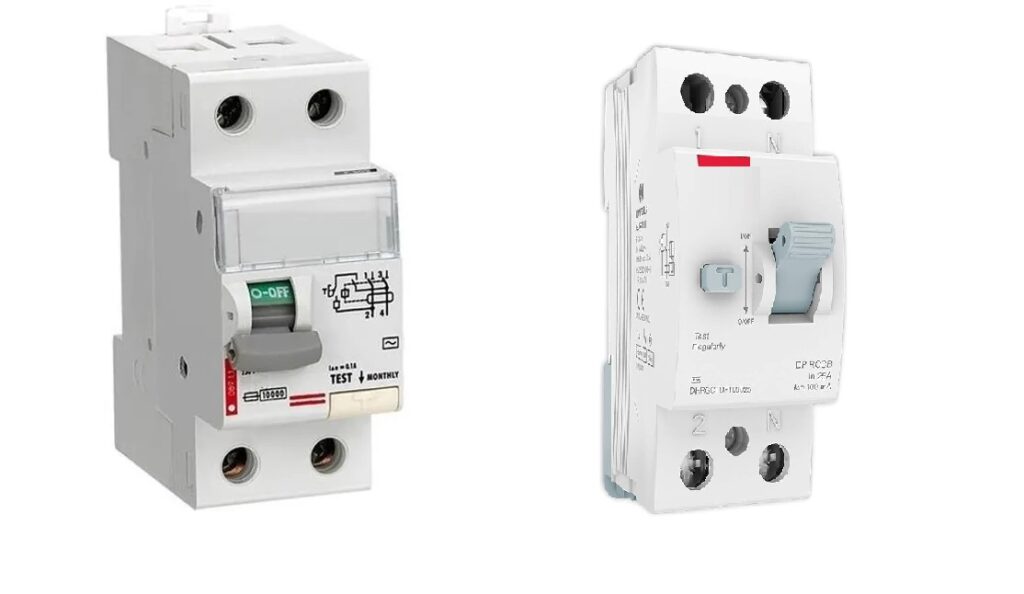ELCB vs RCCB: How they are different?
Earth Leakage Circuit Breakers (ELCB) and Residual Current Circuit Breakers (RCCB), while both share the purpose of safeguarding individuals, their approaches and functionalities differ significantly.

ELCB (Earth Leakage Circuit Breaker)
An ELCB, also known as an earth fault circuit breaker, is a protective device designed to detect and interrupt leakage current flowing to earth. ELCB relies on voltage sensing. If any leakage occurs from devices or live line to the earth wire, it flows through the sensing coiling connected between the earth wire and isolated earth. If this small stray voltage exceeds a predetermined threshold, signifying leakage current, the ELCB trips, interrupting the circuit.
RCCB (Residual Current Circuit Breaker)
An RCCB, also known as a ground fault circuit breaker, operates on the principle of current balance. An RCCB employs a current transformer to monitors the incoming and outgoing currents in a circuit. Any imbalance between these currents, indicating leakage to earth, triggers the RCCB to trip and disconnect the circuit.
Key Differences:
- Detection Method: ELCB – Voltage sensing; RCCB – Current balancing.
- Connection: ELCB – Connected to phase, neutral, and earth conductors; RCCB – Connected only to phase and neutral conductors.
- Sensitivity: RCCBs are generally more sensitive to leakage currents than ELCBs.
- Application: ELCBs are primarily suited for applications where direct earth leakage currents are a concern. RCCBs offer broader protection against various types of earth faults and are preferred in most modern installations.
- Reliance on Earthing: ELCBs rely on a proper earthing system to function effectively. RCCBs can still provide protection even with a faulty earthing system, making them more versatile.
Both ELCBs and RCCBs play a vital role in safeguarding individuals from electrical shocks. While ELCBs offer a simpler and older technology, RCCBs provide a more comprehensive and reliable solution due to their current balancing principle, wider range of fault detection, and less dependence on earthing integrity.